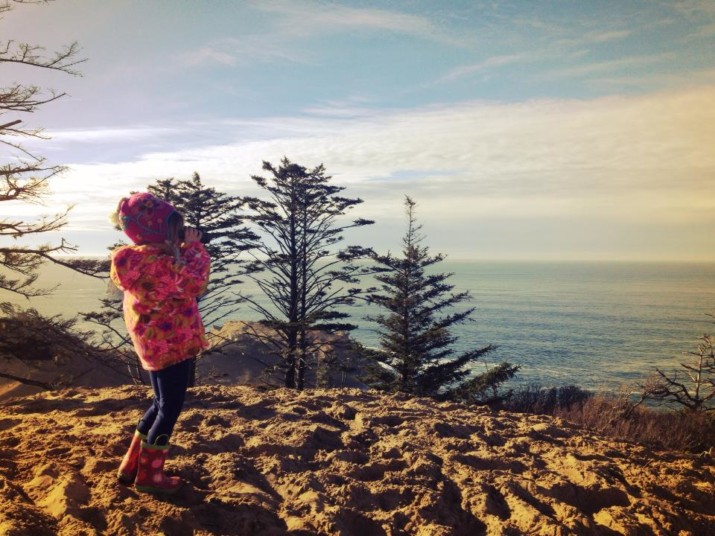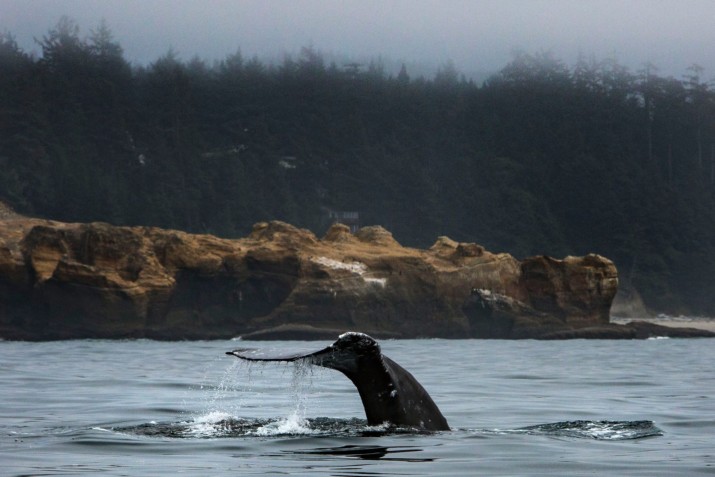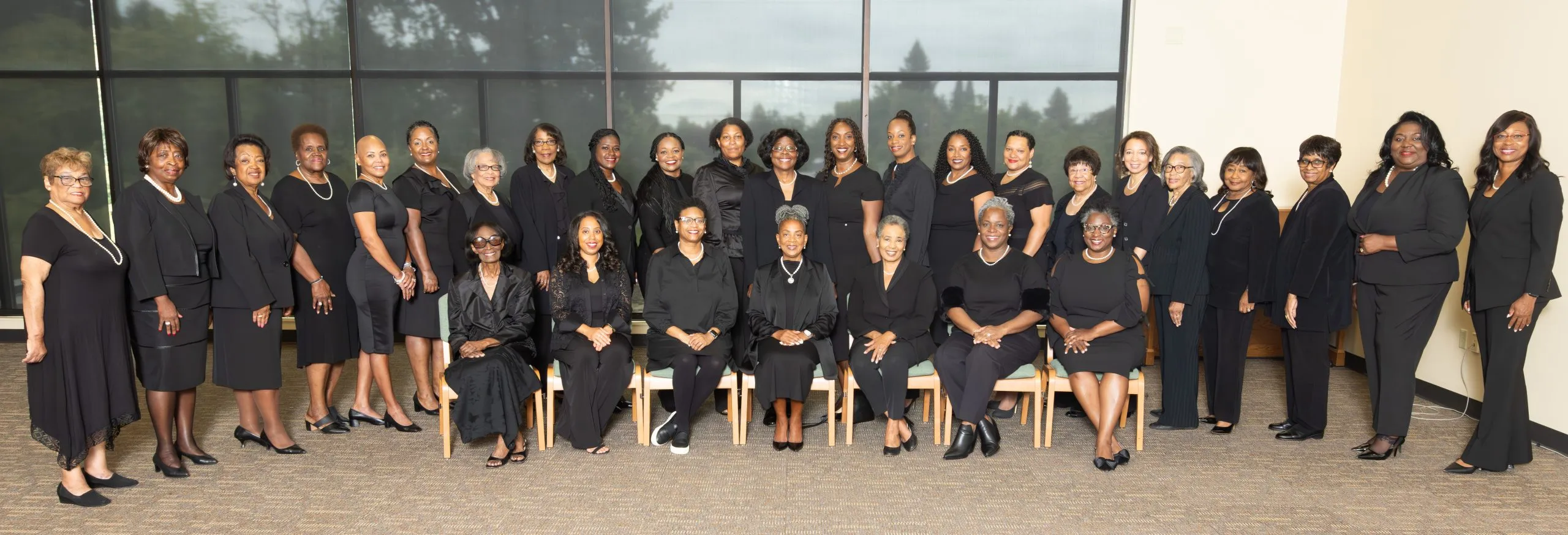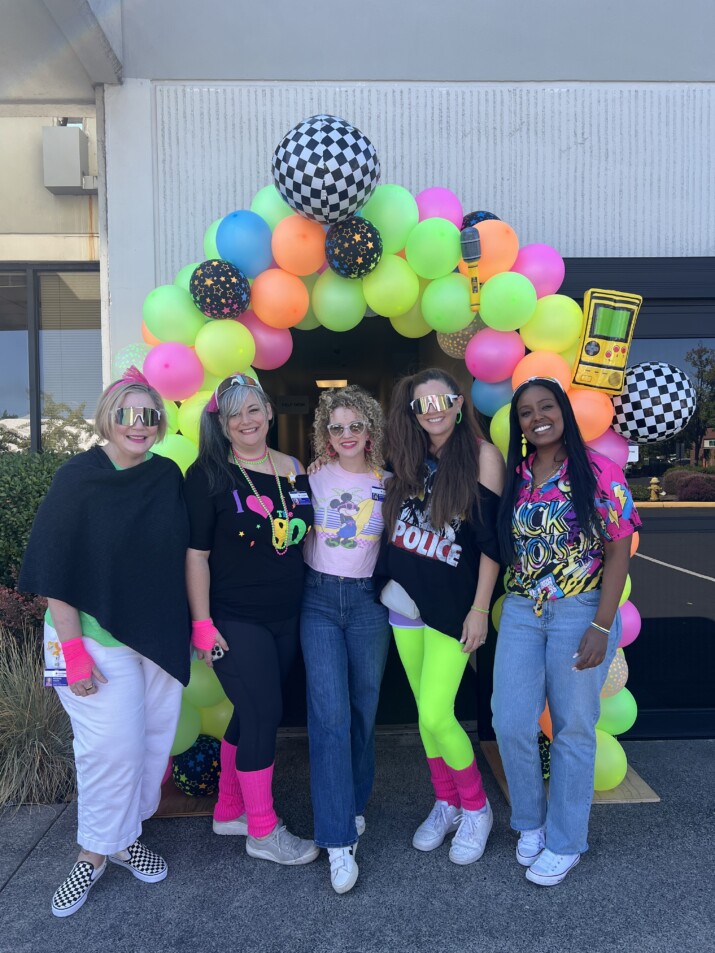Depoe Bay, OR. If you’d like to catch a glimpse of some of the largest animals on earth, you’re in luck. A whale spotting program called, “Whale Watching Spoken Here” will take place last week of August through the first Monday in September. Volunteers will be stationed at 26 different locations along the coast to help visitors see resident gray whales.
The Marine Mammal Institute in Newport, Oregon studies these whales. It found that one male gray whale earned the title of “resident,” remaining offshore from northern California to the central Oregon coast for 383 days. His preferred spot was between Point St. George in northern California and the Oregon/California border, where he stayed for 137 days straight.


Another “hotspot” for these resident gray whales is Depoe Bay.
What causes this small population of whales to remain off the Pacific Northwest instead of going north to the Arctic? Researchers from the Marine Mammal Institute at OSU’s Hatfield Marine Science Center in Newport are not certain.
“It is possible that the whales have concluded that our local food is sufficient to sustain them,” Barbara Lagerquist said. “It also is possible that this group of 200 hasn’t grown larger because that local food supply isn’t sufficient to feed a bigger population. In other words, the local population is at carrying capacity.
Here’s a list of locations where you can spot whales:
From north to south, these are the 26 Whale Watching Spoken Here sites. With or without a volunteer to assist, these are the best locations along the coast to spot whales.
- Lewis and Clark Interpretive Center, Ilwaco, Washington
- Ecola State Park
- Neahkahnie Mountain Historic Marker Turnout on Highway 101
- Cape Meares State Scenic Viewpoint
- Cape Lookout State Park – 2.5 mile hike to site at tip of Cape
- Cape Kiwanda
- Inn at Spanish Head Lobby on 10th floor
- Boiler Bay State Scenic Viewpoint
- The Whale Watching Center/Depoe Bay Sea Wall
- Rocky Creek State Scenic Viewpoint
- Cape Foulweather
- Devil’s Punchbowl State Natural Area
- Yaquina Head Outstanding Natural Area
- Don Davis City Park
- Cape Perpetua Interpretive Center
- Cook’s Chasm Turnout
- Sea Lion Caves Turnout – large Highway 101 turnout south of tunnel
- Umpqua Lighthouse, near Umpqua Lighthouse State Park
- Shore Acres State Park
- Face Rock Wayside State Scenic Viewpoint
- Cape Blanco Lighthouse, near Cape Blanco State Park
- Battle Rock Wayfinding Point, Port Orford
- Cape Sebastian
- Cape Ferrelo
- Harris Beach State Park, Brookings, Oregon
- 9th Street Beach, Crescent City, California
People from all over the world come to the Oregon Coast to learn about the gray whales.


Look for these signs along the coast.


“This is a wonderful way to support marine mammal conservation on a local and even a global basis,” said Bruce Mate, director of the Marine Mammal Institute based at Oregon State University’s Hatfield Marine Science Center in Newport.
The plate costs $40 to order or renew – $35 of that total will go to the OSU’s Marine Mammal Institute for marine mammal research, graduate education, and public outreach. People who have previously purchased vouchers for the plates may submit those at DMV offices in lieu of this fee. Those transferring new whale plates to an existing Oregon-registered vehicle will have some small additional fees to transfer new month and year stickers to the new plates. More details about the license plate can be found here: http://bit.ly/2B2LeSz.
“Some of the proceeds from the plate sales will target marine mammal research and education,” Mate said. “The plates are a way that citizens can support marine mammal research at a very modest biannual basis and let other folks know about their interests, support and concerns for the coast as they drive down the road.”
About OSU’s Hatfield Marine Science Center: The center is a research and teaching facility located in Newport, Ore., on the Yaquina Bay estuary, about one mile from the open waters of the Pacific Ocean. It plays an integral role in programs of marine and estuarine research and instruction, as a laboratory serving resident scientists, as a base for far-ranging oceanographic studies and as a classroom for students.
To learn more about the Depoe Bay Whale Watching Center and whale watching all year long, please click HERE.

![]() 1
1 




